Science & Technology
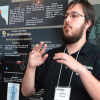 <p dir="ltr">When he was in high school, Daniel Pette was fascinated by stars. When his earth science teacher told him that massive stars die out faster than smaller ones, Pette diagrammed a theory to figure out why this was. When he discovered that his findings were correct, Pette became determined to pursue a career in astrophysics. </p>
<p dir="ltr">When he was in high school, Daniel Pette was fascinated by stars. When his earth science teacher told him that massive stars die out faster than smaller ones, Pette diagrammed a theory to figure out why this was. When he discovered that his findings were correct, Pette became determined to pursue a career in astrophysics. </p>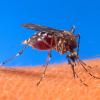 <p>A new paper <a href="http://www.nature.com/ncomms/2015/151012/ncomms9368/abs/ncomms9368.html">published</a> today in the journal <em>Nature Communications </em>and co-authored by a researcher at the University of Colorado Boulder’s BioFrontiers Institute, looks at the genetic strategy used by the human malaria parasite and how old it is from an evolutionary perspective.</p>
<p>A new paper <a href="http://www.nature.com/ncomms/2015/151012/ncomms9368/abs/ncomms9368.html">published</a> today in the journal <em>Nature Communications </em>and co-authored by a researcher at the University of Colorado Boulder’s BioFrontiers Institute, looks at the genetic strategy used by the human malaria parasite and how old it is from an evolutionary perspective.</p>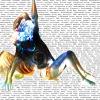 <p>"Round and Round Up and Down: A 31st Century Child's Guide to Spirals or The Time Traveler's Bathroom Reader" is a kid-friendly and adult-friendlier performance that winds through the imagination by way of science, mathematics, storytelling and dance. The show runs Saturday Oct. 10 and Sunday, Oct. 11, at Fiske Planetarium. Both performances start at 7 p.m.</p>
<p>"Round and Round Up and Down: A 31st Century Child's Guide to Spirals or The Time Traveler's Bathroom Reader" is a kid-friendly and adult-friendlier performance that winds through the imagination by way of science, mathematics, storytelling and dance. The show runs Saturday Oct. 10 and Sunday, Oct. 11, at Fiske Planetarium. Both performances start at 7 p.m.</p> <p>CU Theatre & Dance continues its 2015-16 season with "The Otherland," an MFA dance concert created by Bailey Anderson and Rosely Conz. Their show—which runs Oct. 16-18 at the Charlotte York Irey Dance Theatre on the CU-Boulder campus—explores through contemporary dance what it means to be a stranger in one’s everyday world. </p>
<p>CU Theatre & Dance continues its 2015-16 season with "The Otherland," an MFA dance concert created by Bailey Anderson and Rosely Conz. Their show—which runs Oct. 16-18 at the Charlotte York Irey Dance Theatre on the CU-Boulder campus—explores through contemporary dance what it means to be a stranger in one’s everyday world. </p>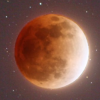 <p>Look. Up in the sky it’s a bird, it’s a plane, it’s a "supermoon" and it’s disappearing. That’s because Sunday evening for the first time in 32 years a "supermoon," a moon that appears larger due to its close orbit to the Earth, and a total lunar eclipse are happening at the same time. But don’t worry about missing it, says Doug Duncan, a CU-Boulder astrophysicist and director of the Fiske Planetarium on campus.</p>
<p>Look. Up in the sky it’s a bird, it’s a plane, it’s a "supermoon" and it’s disappearing. That’s because Sunday evening for the first time in 32 years a "supermoon," a moon that appears larger due to its close orbit to the Earth, and a total lunar eclipse are happening at the same time. But don’t worry about missing it, says Doug Duncan, a CU-Boulder astrophysicist and director of the Fiske Planetarium on campus.</p>- <p>A Computing by Design symposium aimed at helping educators weave computer science principles throughout the K-12 curriculum will be held Monday, Sept. 28, at the STEM-focused <a href="http://tpk8.svvsd.org/"><span class="s2">Timberline PK-8</span></a>, 233 E. Mountain View Ave., in Longmont.</p>
 <p>Toku Kawata, a third-year piano performance doctor of musical arts candidate, spent a month in Paris this summer to research "En Vers" by Japanese composer and sometime Paris resident Akira Miyoshi. He shared his experience with CU-Boulder's <a href="http://www.colorado.edu/music/">College of Music</a>. </p>
<p>Toku Kawata, a third-year piano performance doctor of musical arts candidate, spent a month in Paris this summer to research "En Vers" by Japanese composer and sometime Paris resident Akira Miyoshi. He shared his experience with CU-Boulder's <a href="http://www.colorado.edu/music/">College of Music</a>. </p>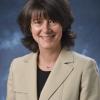 <p>CU-Boulder's <a href="http://ccar.colorado.edu/pages/axelrad.html">Penina Axelrad</a>, professor and chair of the Department of Aerospace Sciences, received the 2015 Aerospace Educator Award from the <a href="http://www.womeninaerospace.org/">Women in Aerospace</a> association.</p>
<p>CU-Boulder's <a href="http://ccar.colorado.edu/pages/axelrad.html">Penina Axelrad</a>, professor and chair of the Department of Aerospace Sciences, received the 2015 Aerospace Educator Award from the <a href="http://www.womeninaerospace.org/">Women in Aerospace</a> association.</p> <p>As far as careers go, jazz pianist Stephen Thurston is hitting all the right notes. Since graduating from the CU-Boulder College of Music with a bachelor’s degree in jazz piano in 2013, Thurston has been growing roots in the Denver jazz scene, playing an average of one show per day—often two.</p>
<p>As far as careers go, jazz pianist Stephen Thurston is hitting all the right notes. Since graduating from the CU-Boulder College of Music with a bachelor’s degree in jazz piano in 2013, Thurston has been growing roots in the Denver jazz scene, playing an average of one show per day—often two.</p>- <p>One of the largest research studies of it kind in the state is now underway at the University of Colorado Boulder to look at the effects of physical activity on the quality of life in older adults, including social, emotional, financial and cognitive function.</p>


